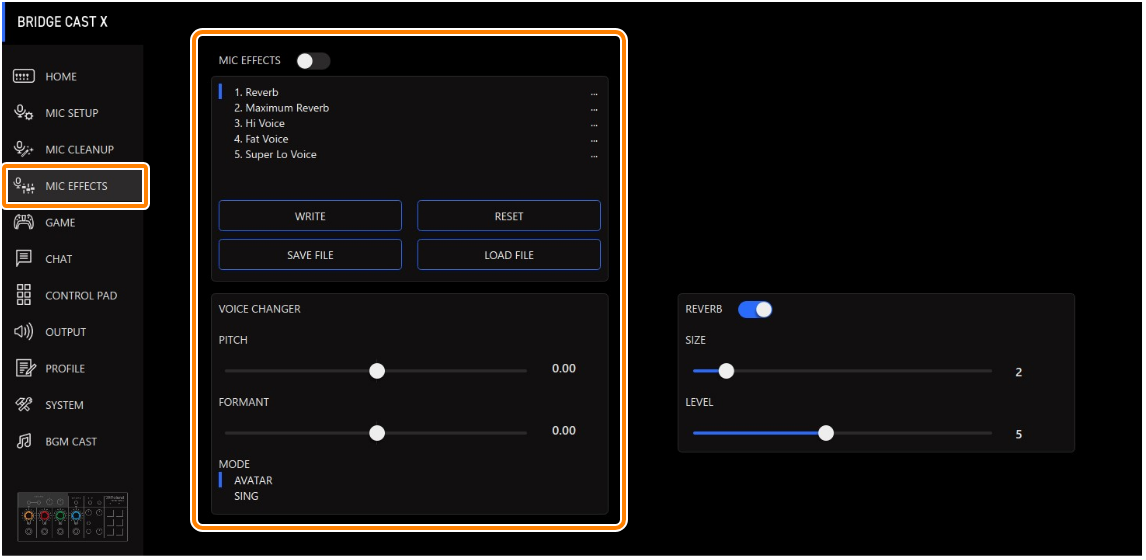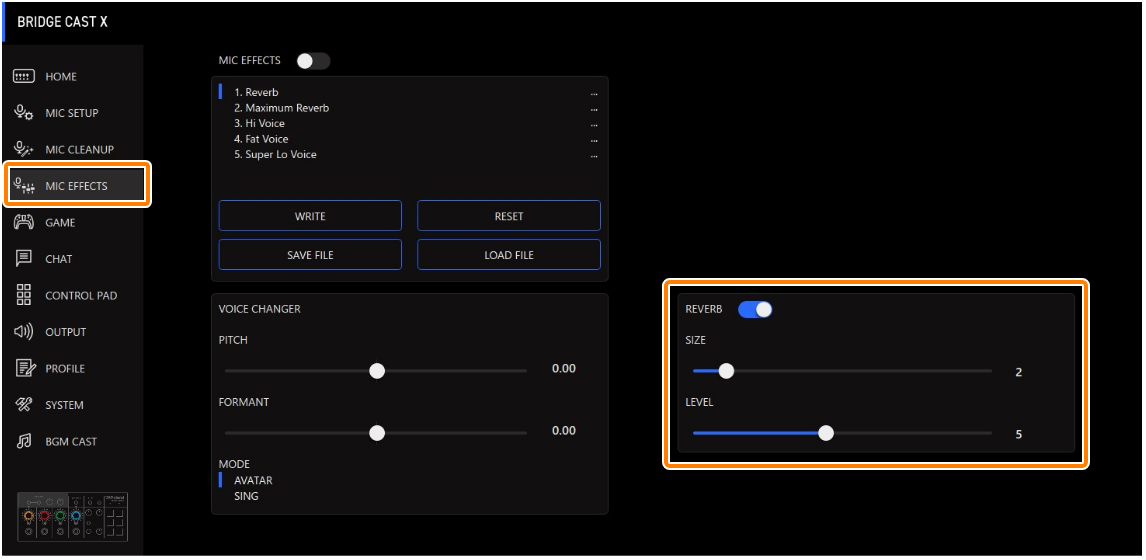You can apply effects to the mic audio (voice changer and reverb) to process the voice.
â Changing the audio (Voice Changer)
â Adding reverb to audio (Reverb)
Changing the audio (Voice Changer)
This effect alters the pitch and tonal quality of your voice. You can create transformations such as “from a female to a male voice”, “from a male to a female voice”, and so on.
On the menu screen, click the “MIC EFFECTS” tab and set the parameters in the respective menus.

Menu Value Explanation MIC EFFECTS Off, On Turns the voice changer on/off.
PITCH -1.00–1.00 Adjusts the pitch of the sound. A setting of “0” is the original pitch.
FORMANT -1.00–1.00 Adjusts the character (formant) of the voice. Settings in the negative (–) range produce a more masculine vocal character, and settings in the positive (+) range produce a more feminine vocal character. A setting of “0” is the original voice.
MODE AVATAR, SING Sets whether to always convert the pitch and formant (AVATAR) or not (SING).
Adding reverb to audio (Reverb)
You can add reverb to a voice to give the impression of spatial depth. This is also effective for giving emphasis when announcing the title of a production or program.
On the menu screen, click the “MIC EFFECTS” tab and set the parameters in the respective menus .

Menu Value Explanation REVERB Off, On Turns reverb on/off.
- To add reverb to audio, both “REVERB” and “MIC EFFECTS” must be turned on.
SIZE 1–10 Sets the size of the room. Larger values simulate larger spaces, making the reverberation sound longer.
LEVEL 1–10
Sets the size of the reverberations.
|
You can save up to five effect settings as presets and recall them whenever you like. â Saving the Mic Effect Settings as a Preset You can also save the effect presets as a single file. |
